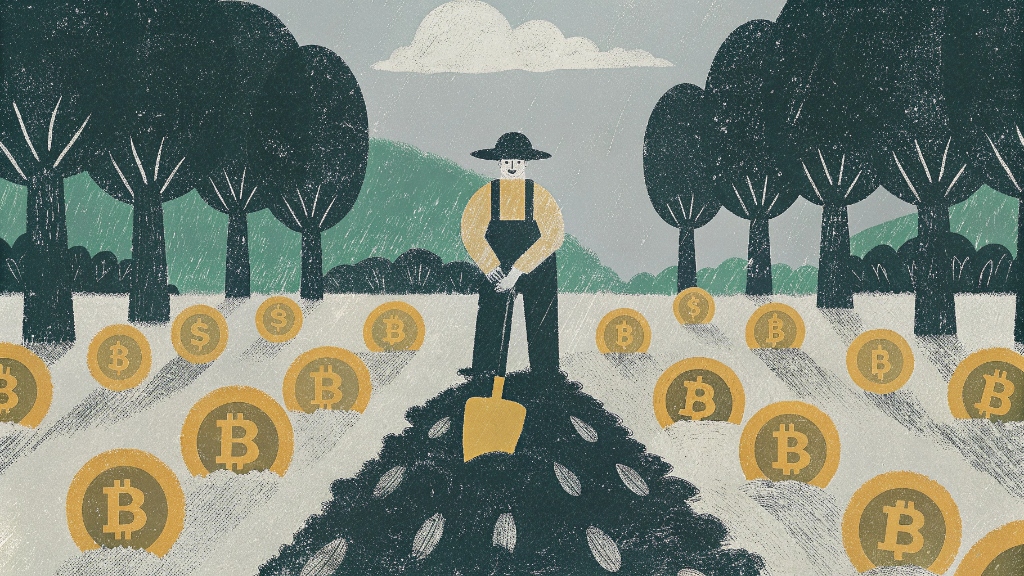
Unlocking Another Form of Passive Crypto Income
Yield farming has become one of the most attractive strategies for crypto holders seeking to maximize returns on their investments. As decentralized finance (DeFi) platforms have proliferated, yield farming allows users to put their cryptocurrency assets to work, earning interest, fees, and even new tokens—all without relying on traditional banks. But what is yield farming, why is it so popular, and how can you start benefiting from it?
Understanding Yield Farming
Yield farming, sometimes called liquidity mining, is a practice where crypto users lend or lock their digital assets into DeFi protocols in exchange for rewards. These rewards usually come as interest payments, transaction fees, or newly minted tokens native to the platform.
In traditional banking, savers might earn a small percentage in interest by leaving US $10,000 in a savings account. Yield farming flips this model, leveraging blockchain platforms to offer annual yields that can range from 2% to well over 100% (depending on risk, demand, and platform incentives).
Liquidity pools—where users deposit and lock up pairs of cryptocurrencies (such as Ethereum and USDC)—serve as the backbone of these platforms. Yield farmers supply assets to these pools, facilitating trading and lending through smart contracts.
Why Would Someone Want to Do Yield Farming?
Yield farming attracts a wide array of people for several reasons:
- Significantly Higher Potential Returns: Some protocols boast yields far exceeding those in traditional savings accounts or bonds. For instance, providing US $5,000 in stablecoins to a high-demand DeFi pool might earn US $500 yearly, while the same amount in a typical bank could yield less than US $50.
- Passive Income: Once provisioned, assets can generate ongoing rewards with minimal active management—perfect for users who want to grow their crypto holdings without constant trading.
- Compound Growth: Many platforms allow users to reinvest their earned tokens, exponentially increasing total returns.
- Participation in Cutting-Edge Finance: Yield farming puts users at the forefront of the DeFi movement, supporting innovation across lending, trading, and even governance.
Yield farmers may also receive governance tokens, which grants voting power over future decisions and upgrades on the protocol.
How Does Yield Farming Work?
Successful yield farming follows several essential steps:
Step 1: Choose a DeFi Platform
Decide where to participate. Popular options include Uniswap, Aave, Curve Finance, Compound, and Yearn Finance.
Step 2: Deposit Funds
Deposit cryptocurrency assets (for example, Ethereum worth US $2,000 and USDC worth US $2,000) into a liquidity pool. Pools often require matched asset pairs to maintain balance for trading.
Step 3: Receive LP Tokens
Upon depositing, you receive Liquidity Provider (LP) tokens representing your share of the pool. These tokens are proof of your stake and entitle you to a proportional share of the pool’s accrued rewards.
Step 4: Earn Rewards
As other users swap, borrow, or lend assets via the platform, you earn rewards. These can be trading fees, lending interest, or governance tokens (like UNI or COMP).
Step 5: Reinvest and Compound
Many farmers choose to claim rewards periodically and reinvest them, either by increasing their deposit or adding liquidity to other pools. This compounding can rapidly increase total returns over time.
Types of Yield Farming Strategies
Yield farming strategies have evolved with the market and technology:
a. Liquidity Provision
Supplying two tokens as liquidity on decentralized exchanges earns a share of trading fees and sometimes platform tokens.
b. Lending and Borrowing
Depositing assets for lending earns interest from borrowers, as seen with protocols like Aave or Compound.
c. Staking
Some platforms and blockchains offer staking rewards just for locking up certain tokens (e.g., Ethereum on Lido, Solana, or Cardano).
d. Layered Farming
Complex strategies may involve depositing assets into stacked protocols—earning rewards on one platform, then staking those rewards on another for even more yield.
What Are the Risks of Yield Farming?
While the rewards can be substantial, yield farming is not risk-free:
- Impermanent Loss: If the value of assets in a liquidity pair fluctuates widely, you may lose out compared to simply holding them.
- Smart Contract Vulnerabilities: Bugs or exploits in protocol code could allow funds to be stolen or locked.
- Rug Pulls and Scams: Projects may disappear with user funds, especially if not properly audited or trusted.
- High Volatility: Crypto prices can be extremely volatile, affecting the underlying value of deposited assets and yields.
Smart yield farmers research each platform thoroughly and use only funds they can afford to lose.
How Can You Start Yield Farming?
Getting started with yield farming is easy, but requires careful planning:
Step 1: Get a Crypto Wallet
You need a Web3-compatible wallet, such as MetaMask or Trust Wallet, to interact with DeFi platforms.
Step 2: Buy or Transfer Assets
Acquire cryptocurrencies supported by your chosen platform (e.g., Ethereum, USDT, USDC, DAI).
Step 3: Connect to a DeFi Protocol
Visit the platform’s website, connect your wallet, and follow instructions for providing liquidity, lending, or staking.
Step 4: Monitor and Manage Your Positions
Track your LP tokens, rewards, and risks. Many platforms show projected APY (Annual Percentage Yield) in real time.
Step 5: Reinvest and Withdraw as Desired
Claim rewards as often as you like—reinvest for compounding, or withdraw to your wallet to hold or spend.
Popular Yield Farming Platforms and Tokens
Some of the biggest platforms for yield farming in US dollars include:
- Uniswap: Rewards liquidity providers with trading fees and UNI tokens.
- Curve Finance: Stablecoin-focused yields, ideal for minimizing volatility.
- Aave and Compound: Lending and borrowing platforms with interest-earning opportunities.
- Yearn Finance: Automated yield farming strategies that help maximize returns for users.
Tokens earned can be sold for US dollars, reinvested, or staked for even further rewards.
The Future of Yield Farming
Yield farming is constantly evolving, with projects experimenting with new incentives, governance models, and risk reduction strategies. As regulatory and security advancements improve, and DeFi grows more mainstream, yield farming may move from niche strategy to mainstream financial practice.
By carefully researching, using trusted platforms, and continually monitoring your holdings, you can benefit from the innovation and potential high returns that yield farming offers. Whether you have US $500 or US $50,000, this strategy puts your cryptocurrency to work across a dynamic and rapidly growing financial landscape.















